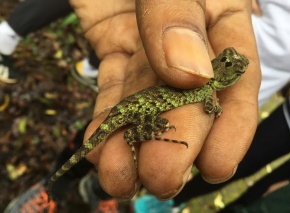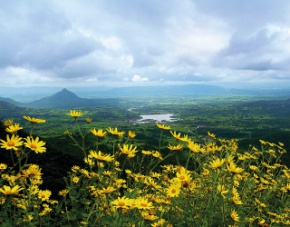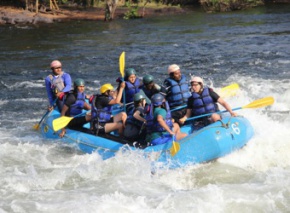
A trip to Satpura should atleast be 4 nights and 5 days so that it allows students to explore these activities curated for this module comfortably, with clear learning outcomes.
Given below are a few activities that can be conducted at this destination, along with the appropriate age group. Our forte is customisation, so feel free to select ONE, ALL or ANY combination of the below activities to design a trip unique to your curriculum and experiential learning needs.
www.nobledrugsstore.com www.canadadiscountpharmacy.com
India is one of the richest countries when it comes to bio-diversity, though our rich natural resources are fast depleting due to extensive population pressure. Nature conservation is a complex issue and has many facets to it. These briefly include understanding forests and animals, protection of forests, knowing the stake-holders, studying the dependents living in the forest, benefits of tourism etc.
The Young Naturalist Boot Camp aims at taking a holistic view of the same and is carefully designed keeping in mind learning objectives of the school.
Capt J. Forsyth of the Bengal Lancers first arrived in the Pachmarhi Hills 150 years ago. This was wild remote country and Forsyth and his fellow British officers were the pioneers of the Indian Forest Service. The ‘Forsyth Trail’ is the same trail, experienced by him in all its natural beauty and ecological richness.
The trail is designed for the students to experience the breathtaking landscape and rare forest wealth that Captain Forsyth witnessed. Though the trail had taken him months, we have compressed the experience to the final two days showing you the very path which finally led to the discovery of Pachmarhi the virgin hill station of central India.
A dedicated and professional team of naturalists from Jungle Lore Student Expeditions will run sessions on behavioural attributes of the flora/fauna. Students will be trained in activities like camera trapping, transects, quadrants, canopy survey, map reading, basic survival skills, first-aid, making of make-shift machans etc.
This activity focusses on guiding students to understand a holistic view of wildlife conservation by exploring its varied aspects with an objective of meeting ESS, Geography and Biology field trip requirements. It will involve learning field research techniques and population estimation methods, such as line transects and area quadrats which will be part of the IA objectives in which students will engage in a comparative study of two different areas. It will cover the following aspects:
- Dynamics of species specific behaviour
- Basics of big game tracking
- Different stake-holders, their roles and responsibilities in wildlife conservation.
- Understanding forests and animals
- Protection & management of forests
- Studying & interacting with the dependents living in and around the forest
- Invasive species like Juli Flora and their effects on the eco-system
- Human effects on the habitat
- Forest department management
- Conservation work
- Tourism its benefits, impact and management
It will also explore Human Geography related concerns, such as:
- Growth of tourism related infrastructure in relation to the main attraction of national park.
- Effects of tourism - positive and negative from cultural, societal and nature preservation point of views.
- Direct employment - forest guards, nature guides, hotel staff etc.
- Indirect employment - for e.g. vegetable store owners that sell inventory to the hotels.
- Generation of employment beyond the sanctuary and India.
- Promotion of entrepreneurship
- Sustainable economics of wildlife reserves
- Its effect on facets of global employment
- Infrastructural development due to tourism
- Its impact in resolution of conflict between man and animal
- Benefits of local involvement in tourism to conservation efforts
- Role of tourism in monitoring and nature conservation
- Education and sensitivity towards nature
- Effects on the lives of local populace due to tourism
- Fund generated for philanthropic work
- Management of tourism in the park
Our community service initiatives are alligned to the needs of the local habitat and the people that depend on it.
1. Liter of Light: An open source project started from the Philippines has spread across the world. This project is unique, as it uses existing resources and provides a solution. The invention is relatively simple. It involves filling up a 1.5L PET bottle with purified water and bleach and installing it onto the roof of a house. The water inside the bottle refracts the sunlight during the daytime and creates the same intensity as a 55 watt light bulb.
**This objective is to install solar bottle bulbs in the villages adjoining the forest.
2. Smoke less Chulha: To reduce the dependency on forest through efficient use of firewood the students will make and install smokeless clay ‘chulhas’ for the villagers which apart from contributing to efficient energy utilisation (by 30 – 40%) will also contribute towards prevention of respiratory disorders due to internal air pollution.
3. Installation of Toy Library: The village primary school are lacking in resources to provide the young minds a complete learning experience. A meaningful toy library (board games) will help the students rejuvenate and stimulate their minds. The ABWA students are to bring age appropriate board games, which they will donate to the school and will ensure that the primary school kids learn to play the game through an interaction module.
CONSERVATION CONCERN
Central India is considered to be the heart of India’s wildlife. It is home to some of India’s largest forest tracts, rich wildlife as well as indigenous people who have been living in the forests since time immemorial. This landscape supports 30 per cent of the world’s tiger population and 17 percent of India’s tiger population with some of the largest contiguous forested tracks connected through wildlife corridors.
The forests and wildlife of this landscape are threatened by encroachment, poaching of tigers and prey species, human wildlife conflict, unregulated and illegal cattle grazing, unsustainable harvesting of Non Timber Forest Produce (NTFP), medicinal plants and other forest resources, forest fires, mining and industrial development

Related Destinations

Region: India
Active Modules: Terrestrial Ecosystem Exploration

Region: India
Active Modules: Terrestrial Ecosystem Exploration, Service and Sustainability

Region: India
Active Modules: Terrestrial Ecosystem Exploration, Project Based Trips, Service and Sustainability

Region: India
Active Modules: Terrestrial Ecosystem Exploration, Project Based Trips, Service and Sustainability

Region: Borneo
Active Modules: Terrestrial Ecosystem Exploration, Project Based Trips

Region: India
Active Modules: Terrestrial Ecosystem Exploration, Project Based Trips

Region: India
Active Modules: Terrestrial Ecosystem Exploration, Project Based Trips, Service and Sustainability

Region: India
Active Modules: Life Skills Expeditions, Project Based Trips, Service and Sustainability

Region: India
Active Modules: Marine Ecosystem Exploration, Project Based Trips, Service and Sustainability

Region: India
Active Modules: Marine Ecosystem Exploration, Life Skills Expeditions

Region: India
Active Modules: Life Skills Expeditions, Project Based Trips

Region: Sri Lanka
Active Modules: Marine Ecosystem Exploration, Project Based Trips

Region: India
Active Modules: Life Skills Expeditions, Project Based Trips, Service and Sustainability

Region: India
Active Modules: Life Skills Expeditions, Service and Sustainability

Region: India
Active Modules: Speleology Expeditions, Life Skills Expeditions

Region: Thailand
Active Modules: Marine Ecosystem Exploration, Service and Sustainability, Project Based Trips

Region: Vietnam
Active Modules: Speleology Expeditions, Life Skills Expeditions

Region: Vietnam
Active Modules: Life Skills Expeditions, Service and Sustainability

Region: India
Active Modules: Life Skills Expeditions, Project Based Trips, Service and Sustainability, Terrestrial Ecosystem Exploration

Region: Borneo
Active Modules: Speleology Expeditions, Life Skills Expeditions, Service and Sustainability

Region: Borneo
Active Modules: Life Skills Expeditions, Service and Sustainability, Marine Ecosystem Exploration

Region: Greece
Active Modules: Marine Ecosystem Exploration, Life Skills Expeditions, Service and Sustainability, Project Based Trips

Region: India
Active Modules: Life Skills Expeditions, Project Based Trips, Service and Sustainability

Region: India
Active Modules: Project Based Trips, Life Skills Expeditions, Service and Sustainability, Terrestrial Ecosystem Exploration




























